Table of Contents
The economics of incarceration is a multifaceted and often contentious topic that delves into the financial aspects of the criminal justice system. As the United States maintains one of the largest incarcerated populations globally, understanding the costs, budgets, and fiscal responsibilities associated with incarceration is of paramount importance. In this article, we will explore the economic dimensions of incarceration, including the factors contributing to its high cost, the impact on government budgets, and the calls for fiscal responsibility and criminal justice reform.
nullDon’t stop here; you can continue your exploration by following this link for more details: Gender Budgeting: Fiscal Context and Current Outcomes
Operational Expenses
Running correctional facilities requires significant resources, including personnel salaries, facility maintenance, utilities, and security measures. These operational expenses constitute a substantial portion of the cost of incarceration.
Running correctional facilities requires significant resources, including personnel salaries, facility maintenance, utilities, and security measures. These operational expenses constitute a substantial portion of the cost of incarceration. Understanding the breakdown of these costs and exploring strategies to manage them efficiently is essential for achieving a more cost-effective and sustainable criminal justice system:
Personnel Costs: Personnel costs, including salaries and benefits for correctional officers, administrative staff, medical professionals, and support staff, represent a significant portion of the budget. To manage these expenses, some jurisdictions are investing in training and retention programs to reduce turnover, which can be costly due to recruitment and training expenses for new staff.
Facility Maintenance: Maintaining correctional facilities is crucial for ensuring the safety and well-being of inmates and staff. Regular repairs, upgrades, and renovations are necessary to address wear and tear, security vulnerabilities, and compliance with safety standards. Effective maintenance programs can help extend the life of facilities and reduce long-term costs.
Utilities: Heating, cooling, lighting, and water services are essential for the daily operations of correctional facilities. Energy-efficient technologies and practices, such as renewable energy sources and energy management systems, can help reduce utility expenses while also contributing to environmental sustainability.
Security Measures: Security is paramount in correctional facilities, and the cost of surveillance systems, access control, perimeter security, and personnel training can be substantial. Investing in cost-effective security technologies and practices can help optimize these expenses without compromising safety.
Healthcare Services: Providing healthcare services to inmates, including medical, dental, and mental health care, is another significant cost. To manage these expenses, some jurisdictions are exploring telemedicine and telehealth solutions, which can improve access to care while reducing transportation and security costs associated with in-person medical visits.
Food Services: Feeding the incarcerated population is an ongoing expense. Some facilities have implemented cost-effective meal planning and procurement strategies, such as bulk purchasing and meal preparation automation, to control food-related expenses.
Rehabilitation and Education Programs: While they represent an expense, rehabilitation and education programs are seen as valuable investments in reducing recidivism rates. Allocating resources to these programs can lead to long-term cost savings by helping inmates acquire skills and make positive changes in their lives.
Innovative Technologies: The adoption of innovative technologies, such as electronic health records, data analytics, and offender management systems, can streamline operations, reduce paperwork, and enhance decision-making. These technologies can lead to cost savings in administrative processes.
Collaborative Initiatives: Collaboration with community organizations, government agencies, and educational institutions can provide cost-sharing opportunities and resources for rehabilitation programs and reentry support. By leveraging external partnerships, correctional facilities can expand their services without substantially increasing their budgets.
Evidence-Based Practices: Implementing evidence-based practices in correctional management can help reduce costs by optimizing the allocation of resources to programs and services proven to be effective in achieving positive outcomes for inmates and society.
In conclusion, the cost of operating correctional facilities is a significant burden on government budgets. To create a more cost-effective and sustainable criminal justice system, correctional agencies must explore strategies to manage operational expenses efficiently while maintaining safety and rehabilitation as core priorities. By addressing these costs strategically, jurisdictions can strike a balance between fiscal responsibility and the humane treatment and reintegration of incarcerated individuals.
Additionally, you can find further information on this topic by visiting this page: Economics of Incarceration | Prison Policy Initiative
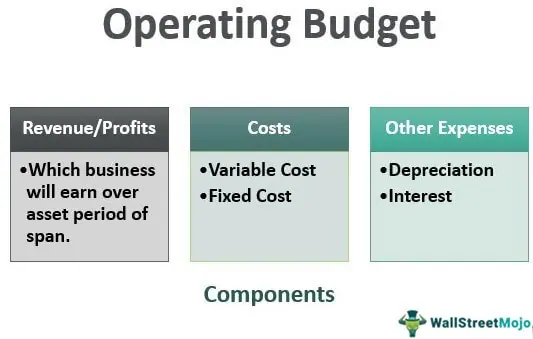
Medical Care
Providing healthcare services for inmates is a costly endeavor, especially given the prevalence of chronic illnesses and mental health conditions within the incarcerated population.
Supplying healthcare services for inmates is a complex and resource-intensive undertaking, with substantial financial implications, primarily because of the widespread prevalence of chronic illnesses and mental health conditions among those in correctional facilities. Incarcerated individuals often face a higher burden of health issues compared to the general population, and addressing these needs is both a moral obligation and a practical necessity.
The first challenge lies in the sheer scale of healthcare provision within prisons and jails. With millions of individuals behind bars, correctional healthcare must cater to a diverse array of medical requirements, from routine check-ups to managing complex chronic diseases. This volume of care requires a significant allocation of funds, including the costs associated with medical staff, medications, medical equipment, and specialized treatment facilities.
Chronic illnesses, such as diabetes, hypertension, and HIV/AIDS, are prevalent among inmates, and the long-term management of these conditions demands sustained medical attention and medications. Moreover, mental health disorders, ranging from depression to severe psychoses, are alarmingly widespread within the incarcerated population. Treating these conditions necessitates specialized care, often including therapy, counseling, and psychiatric medications.
Incarcerated individuals also face higher rates of infectious diseases, such as tuberculosis and hepatitis, which require not only treatment but also preventive measures to curb outbreaks within the confined environment of correctional facilities. Additionally, the aging prison population brings a surge in age-related health issues, further driving up healthcare costs.
Beyond the immediate health concerns, providing healthcare services in prisons and jails has broader implications. Ensuring adequate medical care is not only a constitutional requirement but also a factor in reducing recidivism. Inmates who receive proper healthcare during their incarceration are more likely to reintegrate into society successfully, as they are healthier, more mentally stable, and less likely to resort to criminal activities upon release.
While the financial burden of correctional healthcare is undeniable, it is essential to remember that failing to provide adequate care can lead to dire consequences, including compromised public health, human rights violations, and potential legal liabilities. As we navigate the challenges of providing healthcare to inmates, we must continue to seek cost-effective solutions that prioritize the well-being of incarcerated individuals while recognizing the societal benefits of better healthcare within the criminal justice system.
You can also read more about this here: Budget of the U.S. Government

Overhead Costs
Overhead costs encompass administrative expenses, legal fees, and infrastructure maintenance, all of which contribute to the overall cost of incarceration.
Overhead costs represent a significant portion of the financial burden associated with incarceration. These expenses go beyond the basic necessities of housing and feeding inmates, and they are critical to understanding the true cost of maintaining a prison system.
Administrative expenses are a substantial component of overhead costs. They cover the salaries and benefits of a wide range of personnel, including prison administrators, clerical staff, and support personnel. These professionals play essential roles in managing the day-to-day operations of correctional facilities, ensuring safety, security, and compliance with regulations. While these expenses are necessary for the proper functioning of the correctional system, they can be a substantial part of the overall budget.
Legal fees are another substantial contributor to overhead costs. Inmates have the right to legal representation, and prisons often face legal challenges related to inmate rights, grievances, and lawsuits. These legal expenses include hiring attorneys, court fees, and settlement costs when necessary. Legal fees can quickly add up, especially in cases involving class-action lawsuits or complex legal disputes.
Infrastructure maintenance is a crucial but often underestimated aspect of overhead costs. Prisons require constant maintenance and upkeep to ensure they remain safe and operational. This includes repairing and maintaining physical infrastructure, such as buildings, security systems, and utility systems. Neglecting infrastructure maintenance can lead to costly emergency repairs and jeopardize the safety and security of both inmates and staff.
When considering the overall cost of incarceration, it’s essential to account for these overhead costs, as they significantly impact budgets and resources. Finding ways to optimize administrative efficiency, manage legal expenses effectively, and invest in sustainable infrastructure can help correctional systems reduce overhead costs while maintaining safety and security standards. This, in turn, can free up resources for rehabilitation and reentry programs, ultimately contributing to a more balanced and effective criminal justice system.
To delve further into this matter, we encourage you to check out the additional resources provided here: Economics of Incarceration | Prison Policy Initiative

Recidivism and Lost Productivity
The cycle of recidivism, where individuals reoffend and return to prison, results in a continuous drain on resources and lost productivity. High recidivism rates compound the economic burden of incarceration.
nullYou can also read more about this here: Improving In-Prison Rehabilitation Programs

Budget Allocation
The substantial financial commitment required for maintaining correctional facilities has a direct impact on government budgets at the federal, state, and local levels. A significant portion of public funds is allocated to corrections, often at the expense of other vital services such as education and healthcare.
The financial burden associated with the operation and maintenance of correctional facilities represents a substantial and ongoing challenge for governments at all levels, be it federal, state, or local. This financial commitment not only strains budgets but also has far-reaching implications for the allocation of public funds and the overall well-being of communities.
One of the most striking aspects of this challenge is the sheer magnitude of resources required to sustain correctional facilities. Funding is directed towards the construction and upkeep of prisons and jails, staffing, inmate healthcare, security measures, and various administrative functions. This allocation of resources often results in a significant portion of public funds being absorbed by the corrections system.
Unfortunately, the consequences of this financial allocation can be detrimental to other essential public services. In many instances, funds earmarked for corrections divert resources away from crucial areas such as education, healthcare, and social services. This can have a cascading effect on communities, hindering educational opportunities, reducing access to quality healthcare, and diminishing the social safety net that helps vulnerable populations.
Moreover, the long-term sustainability of such a budgetary approach is questionable. The continuous growth in corrections spending can lead to budgetary crises, with governments struggling to meet their financial obligations in other sectors. This can result in a cycle of underinvestment in education, healthcare, and social services, perpetuating the very conditions that contribute to crime and incarceration in the first place.
To address this challenge, there is a growing recognition of the need to rethink our approach to criminal justice spending. Advocates for reform argue for a shift towards investments in evidence-based alternatives to incarceration, such as diversion programs, rehabilitation, and community-based initiatives. By redirecting funds from corrections towards these proactive measures, governments can not only reduce the financial burden of maintaining correctional facilities but also address the root causes of criminal behavior, ultimately leading to safer and more prosperous communities. This reevaluation of budget priorities is not only fiscally responsible but also aligns with the broader goal of achieving a fair, effective, and equitable criminal justice system.
Explore this link for a more extensive examination of the topic: Economics of Incarceration | Prison Policy Initiative
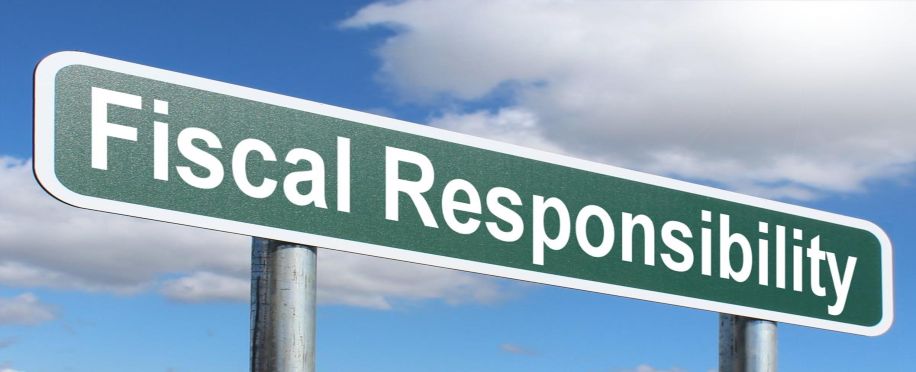
Budget Constraints
The allocation of funds to corrections can constrain the availability of resources for programs and initiatives that address the root causes of crime, such as poverty, education gaps, and substance abuse treatment.
The allocation of funds to corrections at the expense of addressing the root causes of crime has significant implications for society and public policy. This scenario underscores the need for a more balanced and holistic approach to criminal justice and social issues:
Reinforcing the Cycle of Incarceration: When a disproportionate amount of funds is channeled into corrections, it perpetuates a cycle where individuals are incarcerated without addressing the underlying factors that lead to criminal behavior. Without interventions that tackle poverty, lack of education, and substance abuse, many individuals are more likely to reoffend, leading to a continuous drain on resources.
Missed Opportunities for Prevention: Budgetary constraints can lead to missed opportunities for crime prevention. Investments in early childhood education, youth mentorship programs, and community-based initiatives can help break the cycle of crime by addressing its root causes before individuals become entangled in the criminal justice system.
Long-Term Fiscal Impact: While it may appear cost-effective in the short term to allocate funds primarily to corrections, this approach often results in a higher long-term fiscal burden. High recidivism rates mean that individuals frequently cycle in and out of the system, incurring additional costs with each return to incarceration.
Social Inequality: The overemphasis on funding corrections at the expense of addressing root causes can exacerbate social inequality. Vulnerable communities disproportionately affected by crime often lack access to the resources and opportunities needed to escape the cycle of criminality.
Impact on Public Safety: A focus on addressing root causes of crime can have a more profound impact on public safety. By investing in measures that prevent crime, communities can reduce the need for excessive spending on law enforcement, courts, and corrections.
Reforming Resource Allocation: Advocates for criminal justice reform emphasize the importance of reallocating resources toward prevention, rehabilitation, and community support. This shift in focus can lead to more equitable outcomes, reduced crime rates, and ultimately, a more just and fiscally responsible system.
In conclusion, the allocation of funds within the criminal justice system is a critical issue with far-reaching consequences. A more balanced and forward-thinking approach that prioritizes addressing the root causes of crime can result in improved public safety, reduced long-term fiscal burdens, and a society that invests in the well-being and potential of all its members, rather than perpetuating a cycle of incarceration.
Don’t stop here; you can continue your exploration by following this link for more details: ‘Imprisonment is expensive’ – breaking down the costs and impacts …
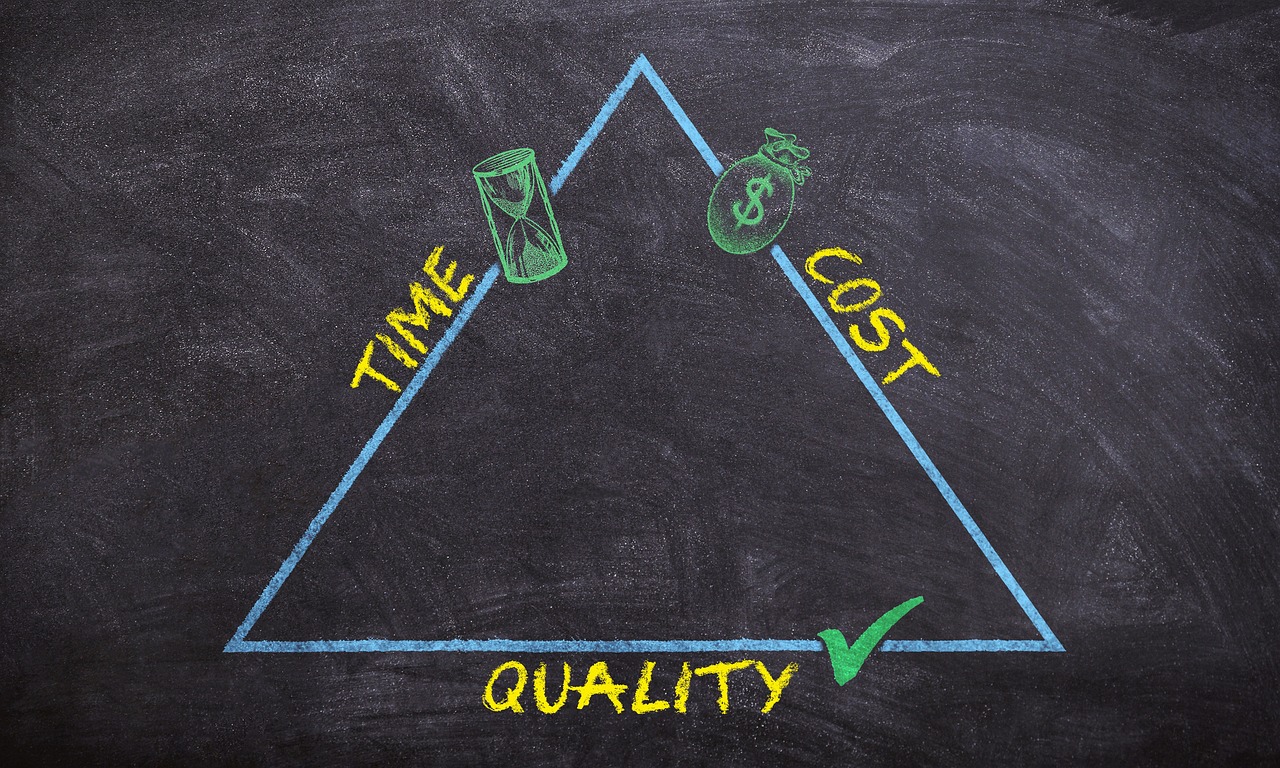
Diminished Economic Growth
The substantial economic resources invested in incarceration divert capital from more productive uses, potentially diminishing economic growth and development.
The substantial economic resources invested in incarceration divert capital from more productive uses, potentially diminishing economic growth and development. This diversion of funds towards the construction and maintenance of prisons, the salaries of correctional staff, and the myriad of associated costs can have a ripple effect on a nation’s economic health.
Firstly, the high cost of incarceration often means reduced funding for other vital public services, such as education, healthcare, and social welfare programs. This underinvestment can have long-term consequences, as it may hinder the development of a skilled and healthy workforce that is essential for economic growth.
Moreover, the focus on punitive measures over rehabilitation can perpetuate a cycle of incarceration. When individuals are released from prison without adequate support, they may struggle to find stable employment, housing, or access to education. These challenges can increase their likelihood of reoffending, leading to a revolving door of incarceration that further drains resources without addressing the root causes of criminal behavior.
In contrast, redirecting resources toward rehabilitation and reentry programs can yield significant economic benefits. By providing inmates with education, vocational training, and mental health support, they are better equipped to reintegrate into society successfully. This can lead to increased employment opportunities, reduced reliance on social services, and, ultimately, a more productive and self-sufficient population.
Furthermore, investments in community-based alternatives to incarceration, such as diversion programs and restorative justice initiatives, can not only save money but also contribute to stronger and safer communities. These approaches address the underlying issues that often lead to criminal behavior, such as substance abuse and mental health challenges, which can alleviate the burden on the criminal justice system and support individuals in becoming law-abiding, contributing members of society.
In summary, while addressing crime and maintaining public safety are crucial societal goals, the allocation of significant economic resources to incarceration should be carefully examined. Reinvesting in rehabilitation, education, and community-based alternatives can not only reduce the financial strain of the criminal justice system but also promote economic growth and development by empowering individuals to lead fulfilling, law-abiding lives.
Should you desire more in-depth information, it’s available for your perusal on this page: Most States Have Cut School Funding, and Some Continue Cutting …
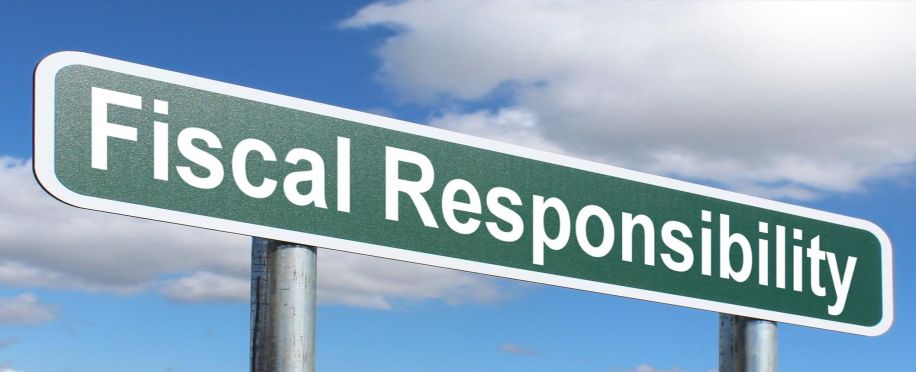
Impact on Vulnerable Communities
Budgetary constraints that result from the high cost of incarceration disproportionately affect vulnerable communities, exacerbating inequality and social disparities.
nullFor a comprehensive look at this subject, we invite you to read more on this dedicated page: Economics of Incarceration | Prison Policy Initiative
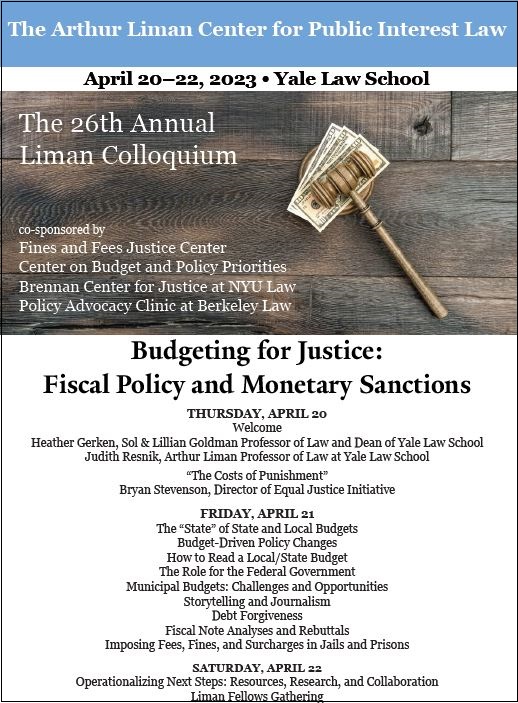
Cost-Effective Alternatives
Advocates for fiscal responsibility emphasize the need for cost-effective alternatives to incarceration. These include diversion programs, rehabilitation initiatives, and community-based supervision, which can reduce costs while improving outcomes.
The call for fiscal responsibility in criminal justice is a powerful impetus for reevaluating traditional approaches to incarceration. It underscores the importance of finding innovative and cost-effective alternatives that not only save taxpayer dollars but also yield better results for society as a whole. Expanding on the idea of alternatives to incarceration:
Diversion Programs: Diversion programs are a cornerstone of cost-effective alternatives to incarceration. They aim to redirect individuals away from the criminal justice system and toward rehabilitation and community-based support. For example, drug courts and mental health diversion programs provide treatment and counseling instead of imprisonment for non-violent offenders with underlying issues. This approach not only reduces the financial burden of incarceration but also addresses the root causes of criminal behavior.
Rehabilitation Initiatives: Investing in rehabilitation within correctional facilities and as part of community-based programs can yield substantial long-term savings. Educational and vocational training, substance abuse treatment, and mental health counseling help individuals acquire skills and address underlying issues that contribute to criminal behavior. By preparing inmates for successful reentry, these initiatives reduce recidivism rates, which, in turn, lower the costs associated with repeated incarcerations.
Community-Based Supervision: Community-based supervision programs, such as probation and parole, are often more cost-effective than incarceration. They allow individuals to serve their sentences in the community while being closely monitored. These programs emphasize reintegration, rehabilitation, and support services, which can help individuals avoid reoffending and re-enter the workforce. Reducing the prison population through such programs can result in substantial cost savings.
Restorative Justice: Restorative justice practices emphasize repairing harm caused by criminal behavior rather than punitive measures. These programs bring together victims, offenders, and the community to address the consequences of the crime. By promoting accountability, restitution, and community healing, restorative justice not only reduces the financial costs of traditional court proceedings but also fosters a sense of closure and resolution for victims.
Evidence-Based Practices: Implementing evidence-based practices, which are supported by research and proven to be effective, can lead to better outcomes while managing costs. These practices inform decisions regarding sentencing, supervision, and rehabilitation, ensuring that resources are allocated efficiently and to programs that deliver the best results.
Prevention and Early Intervention: Preventive measures and early intervention programs can have a profound impact on reducing the need for incarceration in the first place. Investments in education, youth mentoring, substance abuse prevention, and mental health services can mitigate the root causes of criminal behavior, ultimately reducing the burden on the criminal justice system.
Reinvestment in Communities: Diverting funds from the correctional system toward community reinvestment initiatives can lead to long-term savings. These initiatives focus on addressing the underlying socioeconomic factors that contribute to crime, such as poverty, lack of access to quality education, and limited economic opportunities. By tackling these root causes, communities can reduce crime rates and decrease reliance on incarceration.
In conclusion, advocates for fiscal responsibility in the criminal justice system recognize the value of alternatives to incarceration that prioritize rehabilitation, community reintegration, and addressing the root causes of crime. These alternatives not only save money but also contribute to safer communities and a more just and equitable society. By shifting the focus from punitive measures to effective interventions, we can achieve better outcomes for both individuals and society as a whole while optimizing the allocation of resources within the criminal justice system.
To expand your knowledge on this subject, make sure to read on at this location: Economics of Incarceration | Prison Policy Initiative

Bail Reform
Reforming the cash bail system can help reduce pretrial detention costs and address disparities in the treatment of individuals who cannot afford bail.
Reforming the cash bail system represents a critical step toward addressing the multifaceted challenges associated with pretrial detention. Beyond the immediate financial considerations, such reform can have far-reaching impacts on the criminal justice system, fairness, and social equity. Let’s explore how changes to the cash bail system can lead to cost reductions and a more equitable treatment of individuals awaiting trial.
**1. Cost Reduction: One of the most immediate benefits of bail reform is the reduction of pretrial detention costs. When individuals are detained solely because they cannot afford bail, taxpayers bear the burden of covering the costs of their incarceration. This includes expenses related to housing, healthcare, food, and security. By implementing alternatives to cash bail, such as risk assessment tools, electronic monitoring, or community supervision, jurisdictions can significantly reduce these financial burdens.
**2. Mitigating Economic Disparities: The cash bail system often perpetuates economic disparities in the criminal justice system. Individuals with financial means can secure their release while awaiting trial, while those without such resources remain incarcerated. Reforming bail practices ensures that pretrial liberty is not contingent on one’s ability to pay, fostering a more equitable system where justice is not influenced by economic status.
**3. Enhancing Due Process: Cash bail reform aligns with principles of due process by ensuring that individuals are not held in custody without a legitimate reason. When bail is set solely based on a defendant’s ability to pay, it can result in pretrial detention that lacks a compelling justification. Reform efforts promote fairness and uphold the principle that individuals are innocent until proven guilty.
**4. Reducing Jail Overcrowding: The use of cash bail contributes to jail overcrowding, which strains resources, compromises safety, and limits access to rehabilitation and support services for all inmates. By adopting alternatives to cash bail, jails can alleviate overcrowding and create safer, more humane environments for those in custody.
**5. Focus on Risk Assessment: Bail reform encourages the use of risk assessment tools to determine whether individuals pose a flight risk or a threat to public safety. These tools evaluate various factors, such as criminal history and community ties, to make more informed decisions about pretrial release conditions. This data-driven approach enhances the accuracy of release decisions.
**6. Promoting Rehabilitation: Pretrial detention can disrupt individuals’ lives, making it challenging to maintain employment, housing, and family connections. By reducing unnecessary detention through bail reform, individuals can better access rehabilitation and support programs that address underlying issues and reduce the likelihood of reoffending.
**7. Community-Based Alternatives: Reform initiatives often emphasize community-based alternatives to cash bail. These alternatives, such as pretrial services, electronic monitoring, or supervised release, allow individuals to remain in their communities while awaiting trial. This approach strengthens community ties and helps individuals maintain stability during the pretrial period.
In conclusion, reforming the cash bail system goes beyond cost reduction; it embodies a commitment to fairness, due process, and social equity within the criminal justice system. By addressing economic disparities, promoting risk-based assessments, and reducing unnecessary pretrial detention, bail reform not only benefits individuals awaiting trial but also contributes to a more just and efficient criminal justice system that upholds the principles of fairness and equal treatment for all.
Don’t stop here; you can continue your exploration by following this link for more details: Following the Money of Mass Incarceration | Prison Policy Initiative

Sentencing Reform
Reforming sentencing laws, such as mandatory minimum sentences, can lead to reduced incarceration rates and associated costs, while ensuring that punishments are proportionate to the crimes committed.
Reforming sentencing laws, such as mandatory minimum sentences, can lead to reduced incarceration rates and associated costs, while ensuring that punishments are proportionate to the crimes committed. This idea of sentencing reform is a critical aspect of modern criminal justice policy, and it has far-reaching implications for both the individuals within the system and society as a whole. Let’s explore some extended ideas related to sentencing reform:
Focus on Rehabilitation: Sentencing reform can shift the emphasis from punitive measures toward rehabilitation. It recognizes that many individuals in the criminal justice system can benefit from support, education, and treatment to address the underlying causes of their criminal behavior.
Restorative Justice: An important element of sentencing reform is embracing restorative justice principles. This approach prioritizes repairing harm done to victims and communities, emphasizing accountability and the potential for offender rehabilitation.
Elimination of Mandatory Minimums: Revisiting and potentially eliminating mandatory minimum sentences for certain non-violent offenses can prevent individuals from receiving disproportionately harsh punishments for minor infractions.
Individualized Sentencing: Sentencing reform encourages judges to consider the unique circumstances of each case and offender. This approach allows for more nuanced and just sentencing decisions.
Reduction in Recidivism: By offering alternatives to incarceration, such as probation, parole, and diversion programs, sentencing reform can reduce the likelihood of individuals reoffending and returning to prison.
Addressing Racial Disparities: Sentencing reform efforts often focus on addressing racial disparities within the criminal justice system. Research has shown that certain minority groups are disproportionately affected by harsh sentencing laws, leading to calls for equity and fairness.
Cost Savings: Reducing incarceration rates through sentencing reform can lead to significant cost savings for states and taxpayers. Funds can be reallocated to other critical areas, such as education, healthcare, and social services.
Public Safety: Contrary to popular belief, sentencing reform does not compromise public safety. Evidence-based practices, such as risk assessment tools, can help identify low-risk offenders who can safely be diverted from prison into community-based programs.
Collaboration with Stakeholders: Successful sentencing reform requires collaboration between legislators, judges, law enforcement agencies, prosecutors, defense attorneys, and community organizations. Engaging all stakeholders ensures that reforms are comprehensive and effective.
Data-Driven Policy: Policymakers are increasingly relying on data and research to inform sentencing reform efforts. Data-driven policy decisions help identify which reforms are most likely to achieve desired outcomes.
Community Reintegration: Sentencing reform should include measures to support the successful reintegration of individuals into their communities after serving their sentences. This includes access to employment, housing, and social services.
Victim-Centered Approaches: In addition to focusing on offenders, sentencing reform should also consider the needs and rights of victims. Restitution and victim support services are important aspects of a balanced approach.
In summary, sentencing reform represents a shift in the criminal justice paradigm towards a more equitable, effective, and cost-conscious system. By reevaluating and modifying sentencing practices, societies can better align punishments with the principles of justice, rehabilitation, and community safety, ultimately working toward a fairer and more efficient criminal justice system.
Don’t stop here; you can continue your exploration by following this link for more details: ECONOMIC PERSPECTIVES ON INCARCERATION AND THE …

Investment in Rehabilitation
Investing in rehabilitation and reentry programs can reduce recidivism rates, ultimately reducing the long-term financial burden of incarceration.
nullIf you’d like to dive deeper into this subject, there’s more to discover on this page: Budget of the United States Government, Fiscal Year 2023

Community Support
Promoting community-based support services, including mental health and substance abuse treatment, can address the underlying factors that contribute to criminal behavior and reduce the need for incarceration.
Promoting community-based support services is not only a cost-effective approach to addressing criminal behavior but also a compassionate and holistic way to tackle the root causes of crime. By prioritizing mental health and substance abuse treatment within the community, we can achieve multiple benefits that extend far beyond just reducing the need for incarceration:
Early Intervention and Prevention: Community-based support services offer the opportunity for early intervention and prevention. By identifying individuals at risk of criminal behavior or substance abuse issues, these programs can provide timely assistance, education, and resources to divert them away from the criminal justice system altogether.
Reducing Recidivism: For individuals who have already been involved in the criminal justice system, community-based support services play a pivotal role in reducing recidivism. Providing mental health and addiction treatment within the community ensures that individuals receive the ongoing support they need to avoid reoffending.
Addressing the Underlying Causes: Criminal behavior often stems from underlying issues such as trauma, addiction, or unmanaged mental health conditions. Community-based services are better equipped to address these root causes, offering comprehensive and personalized treatment plans that focus on healing and rehabilitation.
Maintaining Employment and Stability: Community-based services allow individuals to continue their employment and family responsibilities while seeking treatment. This stability reduces the disruption caused by incarceration, ensuring that individuals can maintain their roles as contributing members of society.
Fostering a Supportive Network: These programs encourage individuals to build a supportive network within their communities. Peer support, counseling, and group therapy are often part of the treatment process, helping individuals develop healthier relationships and a sense of belonging.
Mental Health Crisis Response: Community-based mental health services can provide immediate crisis response, helping individuals in acute distress without resorting to law enforcement or emergency room visits. This approach ensures that individuals receive appropriate care during mental health crises.
Community Policing and Diversion Programs: Collaborations between law enforcement and community-based services can create diversion programs that route non-violent offenders away from incarceration and into treatment or support programs. This not only reduces the burden on the criminal justice system but also offers a more compassionate response to certain offenses.
Tailored and Culturally Competent Care: Community-based services can offer tailored and culturally competent care that respects the unique needs and backgrounds of individuals. This increases the effectiveness of treatment and reduces the risk of individuals falling through the cracks.
Resource Allocation: By shifting resources away from incarceration and towards community-based support services, governments can allocate funds more efficiently. This not only saves taxpayer money but also invests in strategies that address the root causes of crime.
Public Safety: Ultimately, community-based support services contribute to public safety by offering effective treatment and rehabilitation. Individuals who receive the support they need are less likely to pose a threat to their communities, fostering a safer and more secure environment for all residents.
In conclusion, prioritizing community-based support services, particularly mental health and substance abuse treatment, represents a forward-thinking and compassionate approach to addressing criminal behavior. By intervening early, addressing underlying causes, and fostering community connections, these programs contribute to a more just, effective, and humane criminal justice system while enhancing public safety and well-being.
Additionally, you can find further information on this topic by visiting this page: Budget of the U.S. Government

The economics of incarceration presents a complex web of financial considerations that extend beyond the costs of incarceration itself. It influences government budgets, societal resource allocation, and economic growth. Advocates for fiscal responsibility argue that a more balanced approach, one that emphasizes cost-effective alternatives, sentencing reform, and investment in rehabilitation and community support, can lead to improved fiscal outcomes while maintaining public safety. As discussions around criminal justice reform continue, the economic aspects of incarceration remain a crucial focal point for policymakers and advocates striving to create a more just, efficient, and fiscally responsible system.
For a comprehensive look at this subject, we invite you to read more on this dedicated page: Improving In-Prison Rehabilitation Programs
More links
To expand your knowledge on this subject, make sure to read on at this location: Budget of the United States Government, Fiscal Year 2023
